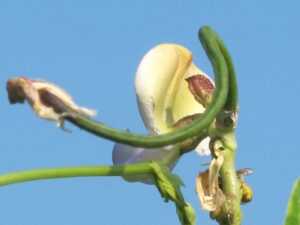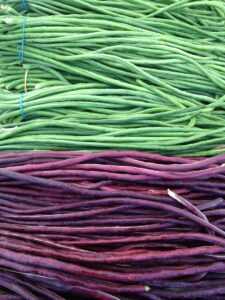Preparing for the holidays…
Changes in delivery dates over the holidays: • During the week of Rosh Hashanah: The Wednesday delivery will be moved up to Tuesday, September 23rd. (Monday deliveries as usual)
The ordering system for Wednesday delivery will close on Sunday, September 21st at 12:00
• The week between Rosh Hashanah and Yom Kippur: All deliveries as usual. • During the week that Sukkot begins: The Wednesday delivery will be moved up to Tuesday, October 7th. (Monday deliveries as usual.)
The ordering system for Wednesday deliveries will close Sunday, October 5th, at 12:00
• During Chol HaMoed Sukkot, there will be no deliveries, thus you will not be receiving boxes on Monday and Wednesday, the 13th and 15th of October. If you wish to increase your vegetable boxes before the holidays, please advise as soon as possible.
Subscribing to our weekly newsletter: The best way to receive messages and updates is via our weekly newsletter, which is published on our website and, in most cases, arrives directly to your email inbox. Those who do not receive the newsletter and wish to do so, please advise. If you prefer to receive a hard copy along with your box, please notify me.
Open Day at Chubeza! In keeping with our twice-yearly tradition, we invite you for a Chol HaMoed “pilgrimage” to Chubeza to celebrate our Open Day. The Sukkot Open Day will take place on Tuesday, October 14th, the 20th of Tishrei (fifth day of Chol HaMoed), between 12:00-17:00. The Open Day gives us a chance to meet, tour the field, and nibble on vegetables and other delicacies. Children have their own tailor-made tours, designed for little feet and curious minds, plus special activities and a vast space to run around and loosen up. (So can the adults…)
Driving instructions are on our website under “Contact Us.” Please make sure you check this before heading our way.
Wishing you a Chag Sameach and Shana Tova from all of us at Chubeza We look forward to seeing you all!
________________________________
Lively Lubia
So last week we got a call from Oren (Chubeza staff emeritus, present-day Chubeza client) who asked if we still “separate out the overly large Thai yard-long bean pods, the ones that were harvested post-maturely? Could you please send me a bag of them, since I like eating the seeds…” Oren, who nibbled his way through harvesting the Thai yard-long bean two years ago, knows his vegetables… But some of our new members contacted me last week wondering why the latest green beans they’d received were so strange and coarse.
Indeed, the Thai yard-long bean, which appears to be “gift-wrapped” in your boxes, all tied up in a rubber band, is rather strange and unique. You shouldn’t expect it to be a green bean, because it simply is not…
Over the past weeks the black-eyed peas have begun ripening in nice quantities, making a formal announcement that summer is at its peak. The black-eyed peas (V. unguiculata ssp. Sesquipedalis) are relatives of the common bean, chickpeas, soy, fava bean and other members of the Faboideae family we so love to munch on. Like them, the black-eyed peas wear two outfits: the green dress, eaten in long green pods, and the dry ensemble where only the dried-up seeds are consumed.
We grow two types of black-eyed peas (lubia): the “short” classic type (short, but still longer than the green bean) and the Thai yard-long beans, which are the first to ripen. Although you have already met the Thai yard-long beans in your boxes, they are generally lesser known, which is why we will dedicate this week’s newsletter to this remarkable vegetable.
In English they are known as the yard-long bean, bora beans, long-podded cowpea, asparagus bean, pea bean, snake bean, or Chinese long bean. All names relate to the bean’s various characteristics: it originates in Southeast Asia, hence the “Chinese” or “Thai” title, and can reach the lofty length of one meter (though it’s generally harvested young, at approximately 30 cm., measuring 1 cm in thickness). It is reminiscent of the asparagus in diameter and length, and because of its flexibility may resemble a green snake (to those of you with overactive imaginations). Its taste ranges between that of green beans and fresh black-eyed peas (not as sweet as the beans), whilst the texture is more like the black-eyed pea, less crunchy than the green bean and more flexible.
The Thai yard-long bean needs more heat than the green bean, and manages quite well throughout the months of summer heat (which certainly cannot be said of green beans). It is seeded in late spring, and we trellis it like peas, on poles with a net spread between the stalks on which the young plants climb efficiently and skillfully. The blooming begins within three months with a couple of beautiful flowers on each pole, resembling two butterflies. A couple of beans ripen from those two, adjacent to each other at the ends, like a couple of twin green worms (I just managed to think up a new name!)
These beans must be harvested with care, as the bloom pole continues to develop flowers throughout the season. Contrary to green beans or peas, it grows slowly and yields pods only after more than three months (compared to two or less), but we can harvest from it on and on, till the temperatures drop in wintertime.
Like at Chubeza, the Thai yard-long bean can be harvested at a young stage, at less than 30 cm and the thickness of 1 cm., in the same way as one would prepare a fresh black-eyed pea or green bean. You can also allow the pods to mature on the plant and use the black, red or white (depending on the variety) seeds as you would dry black-eyed pea pods or any dry bean.
We grow the green variety with black seeds inside, but across Asia there are wide, colorful varieties. The pods themselves come in green and reddish-purple and the seeds are black, white, brown, red, and more…
The Thai yard-long bean can be used in recipes calling for green beans or fresh black-eyed peas, including soups and quiches. In China, it is easily stir- fried, and is actually the original bean to have been used in stir-fried dishes. It tastes wonderful with fish and even pickled. The yard-long bean is rich in vitamin A and contains a good quantity of vitamin C as well.
Some of the recipes included this week range from easy to complicated, but they’re all delicious. But if you don’t feel like firing up a cooking flame in this scorching summer, you are welcome to grab a long snake bean and simply… nibble.
________________________________
Chubeza sends a hearty Mazal Tov to Dror and Naomi on the occasion of the birth of their new baby boy, born this past Saturday. And in the Chubeza tradition, we send our heartfelt wishes for success to our younger generation, our little ones who went back to school today–to Meyshar and Eliyahu, in particular, who are starting first grade, and to young Dror who is starting kindergarten.
May it be a year of learning, play, growth and much happiness for all!
Alon, Bat Ami, Maya, Dror and the entire Chubeza team
______________________
What’s in this Week’s Boxes?
Monday: Butternut squash, corn, tomatoes, slice of pumpkin, leeks, parsley/coriander, cucumbers, red bell peppers, potatoes, Small boxes only: edamame (fresh green soy)/okra/Thai beans, New Zealand spinach.
Large boxes, in addition: Thai beans/eggplant, zucchini, scallions/chives, mint, edamame (fresh green soy)/okra
We’re experiencing a shortage in cucumbers this week, together with the whole Israeli organic market. This is a typical shortage every years at this time. Usually it lasts only a few weeks. We bought carrots instead, so some of you will not get cucs this week but carrots.
Wednesday: Butternut squash, tomatoes, slice of pumpkin, leeks, parsley, cucumbers/carrots, red bell peppers, potatoes, edamame (fresh green soy)/okra/Thai beans, New Zealand spinach, scallions/chives.
Large boxes, in addition: corn, eggplant/zucchini, thyme/mint
And there’s more! You can add to your basket a wide, delectable range of additional products from fine small producers: flour, fruits, honey, dates, almonds, crackers, probiotic foods, dried fruits and leathers, olive oil, bakery products, pomegranate juice and goat dairy too! You can learn more about each producer on the Chubeza website. On our order system there’s a detailed listing of the products and their cost, you can make an order online now!



